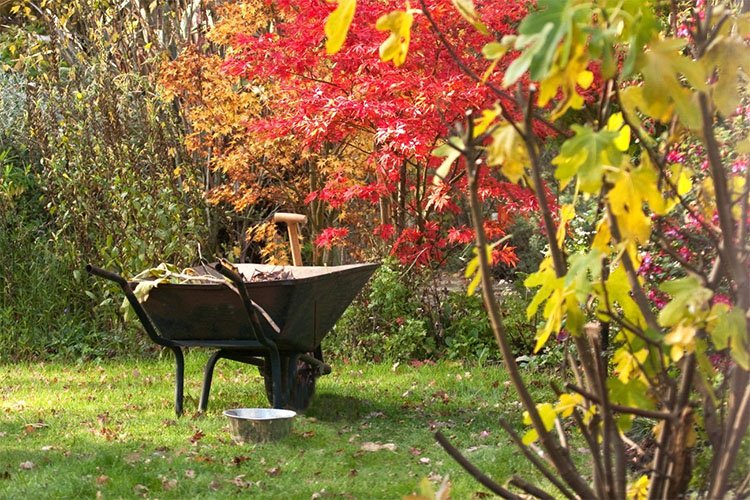November: Gardening Calendar

Fall clean-up is here. It has been a challenging year to say the least. If your plants struggled with insects and diseases, rake up the spent debris now and dispose of it. Don’t add it to your compost pile or you may add more problems next season. The leaves have been falling for months now, but some continue to fall. A light layer on your lawn or garden is not an issue, but don’t let them accumulate for too long. Heavy piles of leaves can cut down on air circulation, oxygen and sunlight. Leaves are a great raw commodity for compost - one of the best things to enrich your soils.
Perennials
Clean up the perennial garden as the plants decline, or after a killing frost. Pay particular attention to your cannas, as the leaf roller insect seems to be getting worse each year. This insect over-winters in the spent debris of the plants and can come back to haunt you next season. Think about even replacing the old mulch. You can still plant new perennials if you have time this season. Perennials planted in the fall give you a stronger plant the following growing season - just make sure you have good soil drainage, or the root system can rot in the ground.
Bulbs
November is the ideal month to plant spring blooming bulbs. Whether you are adding to your collection or planting new beds, concentrate your bulb planting in blocks rather than single lines. Grouping plants together makes a stronger statement than a few plants here and there. Look at some of the new varieties that are on the market, but don’t overlook the tried and true. The general rule of thumb when planting bulbs is to plant them at a depth equivalent to 2-3 times the size of the bulb. You can layer your bulbs, putting the larger daffodils and tulips down deep, then the next layer can be hyacinths, and then topped off with crocus and grape hyacinths. This can give you layers of color and textures, and with proper selection can give you color from late January through April.
Annuals
Some of our summer annuals may still be hanging on, and it has been somewhat amazing at how many have over-wintered - from petunias and callibrachoa to begonias and lantana. Don’t count on that every year, but don’t be too quick to throw these plants away in the fall either. You still have time to plant pansies, violas and snapdragons, but flowering kale and cabbage need some time to get established before hard frost hits. If you are planting winter annuals this late in the season, look for larger, flowering plants to ensure color this winter. These plants can be planted in the ground or in containers, but don’t forget to water - especially the containers. Consider using spring bulbs in the base of your containers to pop up amidst your winter annuals.
Tropicals & Houseplants
By now, all of your houseplants should have been in residence inside for a month or more. If you still have tropicals outside, be prepared to move them under the house or into your garage at the first sign of frost. If they get exposed to a killing frost, most of them are history. Moving them into a heated house this late is also not ideal. They have gotten used to the cool nights and warm days, and you will be moving them into an environment with constant warm temperatures, no humidity and lower light and they are going to shed a lot of leaves. Storing them simply to prevent freezing won’t give you a lush plant next spring, but they will be alive. Cut them back severely next spring when you move them back outside and they should recover.
Trees
Now is the ideal time to plant large shrubs and trees. Planting in the fall allows the roots to become established while the tops are dormant. If you need a large shade tree consider lacebark elm, willow oak, little leaf linden or a fruitless Kentucky Coffee tree. For smaller or mid size trees, try the Paperbark maple, Oklahoma redbud, kousa dogwood or one of the disease resistant crabapples. Hardy shrubs such as hollies, boxwoods, elaeagnus and more can also be planted in the fall and early winter. Avoid planting shrubs that can suffer winter damage such as hydrangeas, gardenias, crape myrtles and azaleas. Wait for an early spring planting of those.